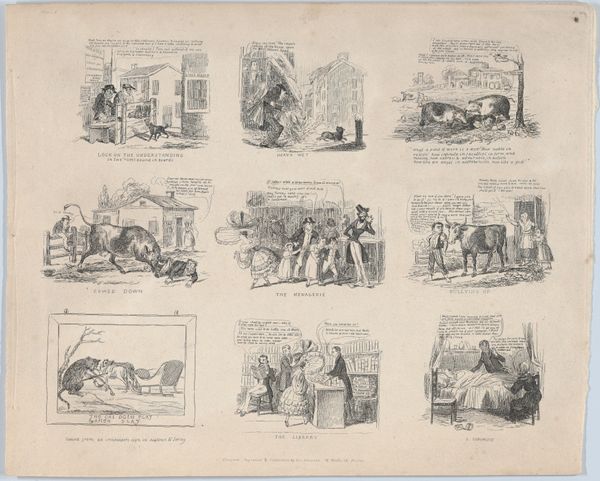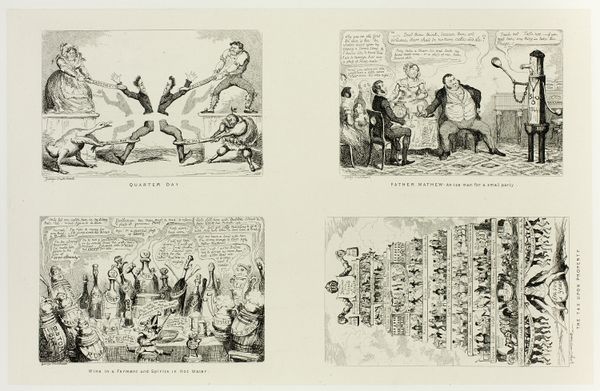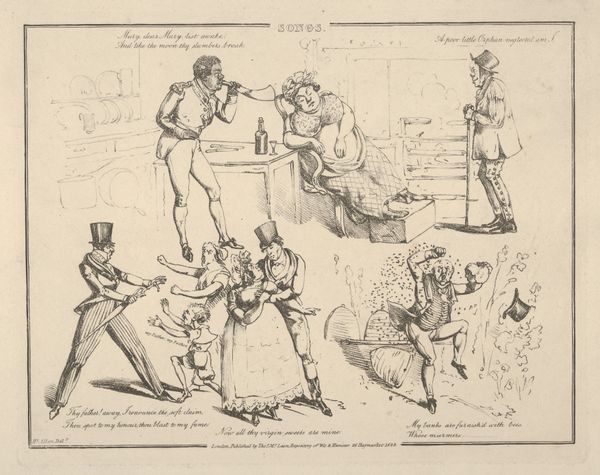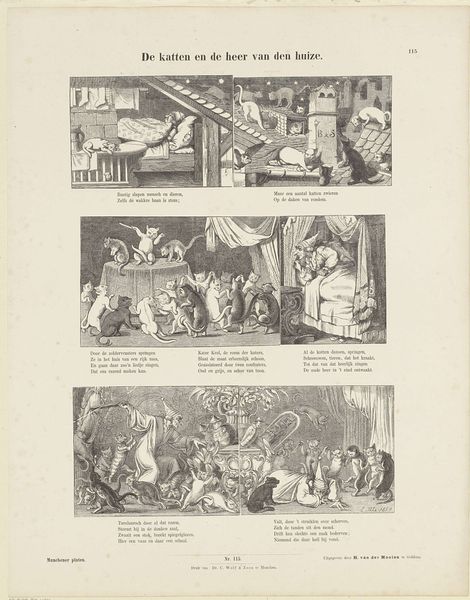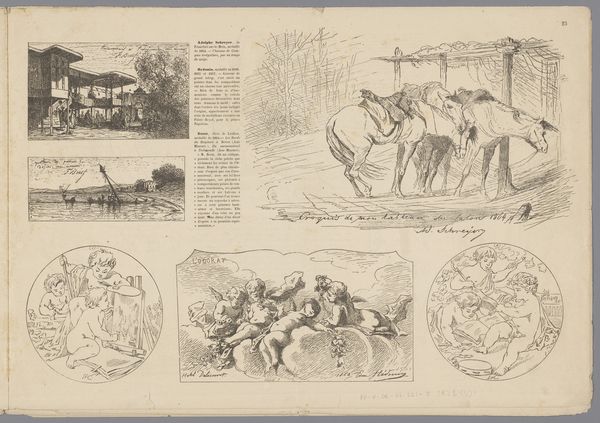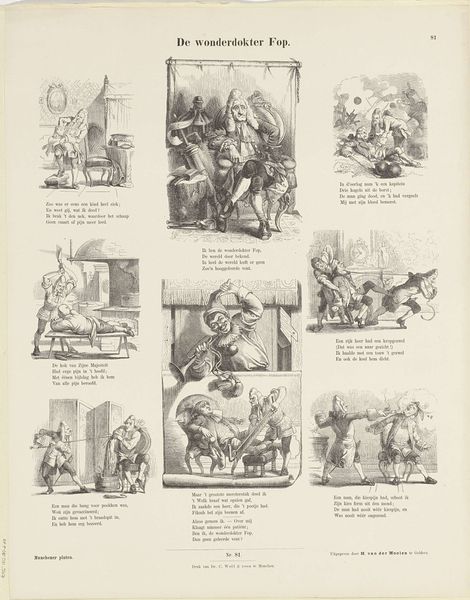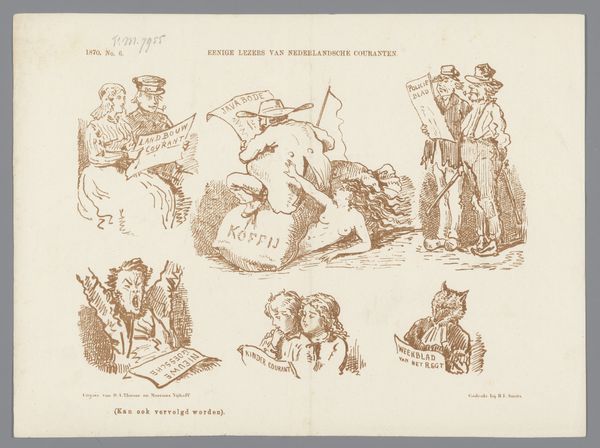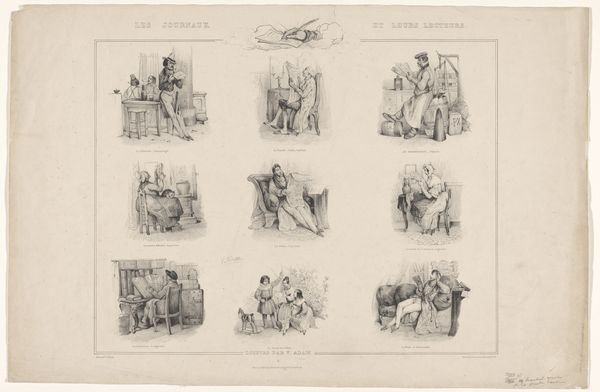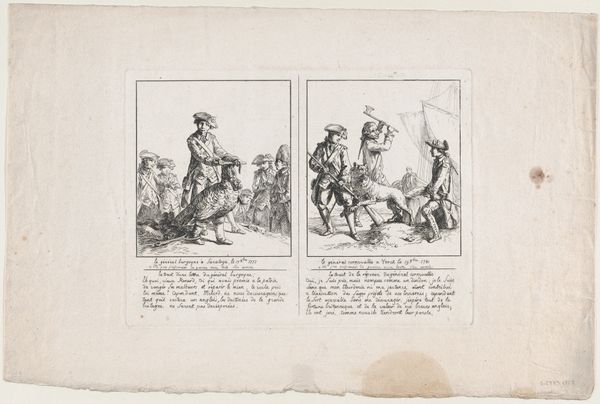
Gevallen paarden voor een kar, Leda en de zwaan, putti met vogels en bacchanten in een fontein Possibly 1864 - 1866
0:00
0:00
drawing, paper, ink
#
drawing
#
aged paper
#
toned paper
#
quirky sketch
#
sketch book
#
figuration
#
paper
#
personal sketchbook
#
ink
#
sketchwork
#
sketchbook drawing
#
watercolour illustration
#
history-painting
#
storyboard and sketchbook work
#
academic-art
#
sketchbook art
Dimensions: height 327 mm, width 468 mm
Copyright: Rijks Museum: Open Domain
This print was made by Firmin Gillot, sometime before his death in 1872. The process used to create it is a photomechanical one that Gillot himself perfected: Gillotage. Gillotage allowed for images to be transferred to metal plates through the use of photography, which were then etched and used to create prints. The technique democratized image-making by simplifying the creation of printing plates. The print shows a variety of scenes, each capturing different subjects and themes, from classical nudes to scenes of labor. The image of fallen horses pulling a cart speaks to the era's reliance on animal labor and the often harsh conditions they endured. The presence of mythological figures like Leda and the swan contrasts sharply with the working-class subjects, highlighting the divide between classical ideals and the realities of industrializing society. By employing photomechanical techniques, Gillot blurred the lines between artistic creation and industrial production. It prompts us to consider the social and economic contexts in which art is made and consumed.
Comments
No comments
Be the first to comment and join the conversation on the ultimate creative platform.
